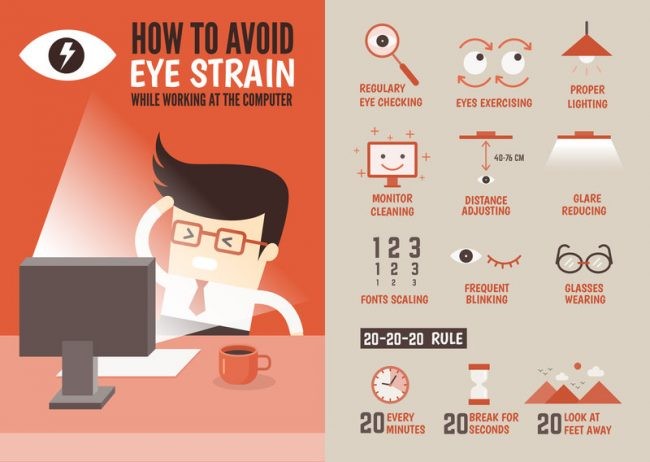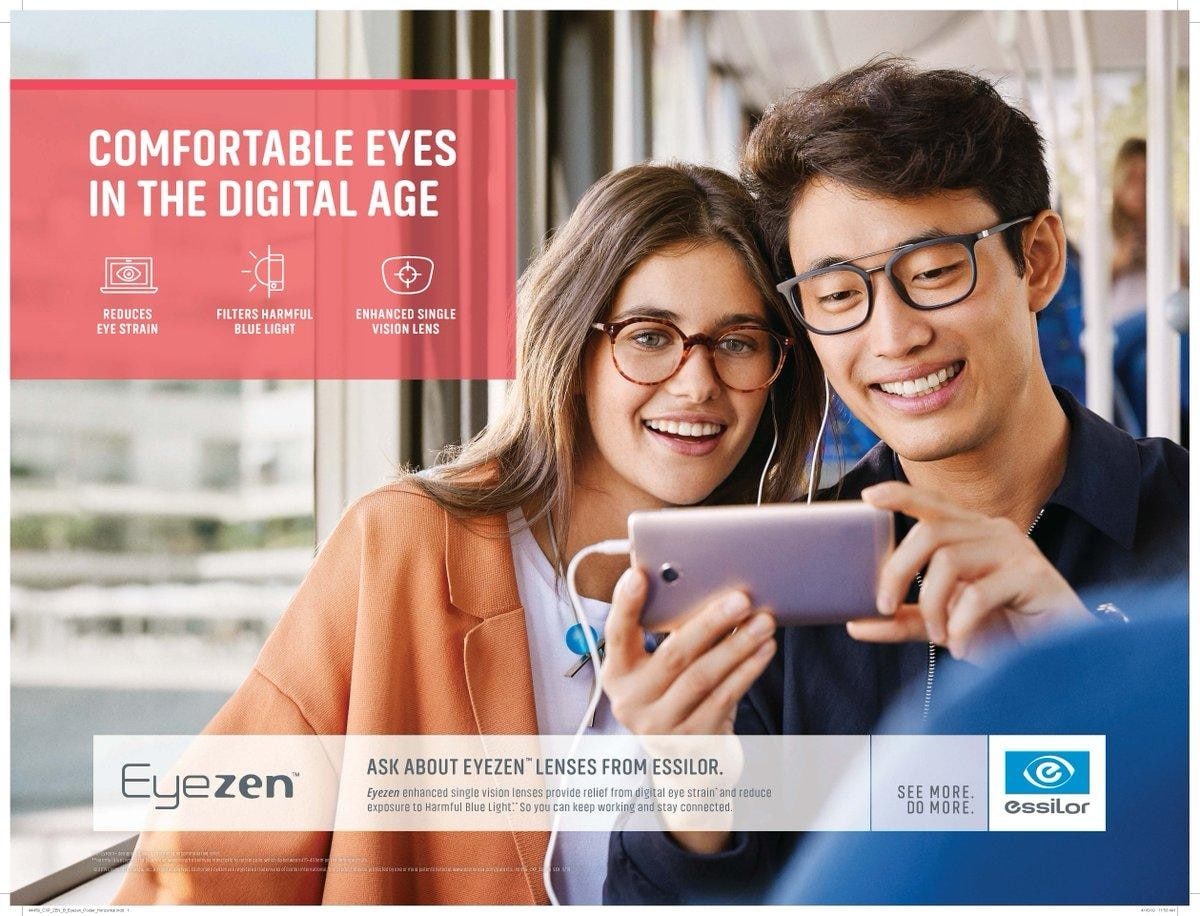
05 Dec Eye Strain: Symptoms, Causes, Relief & Prevention
WHAT IS EYE STRAIN?
While not an actual disease or condition, the term ‘eye strain’ (also referred to as asthenopia) is used to describe several symptoms experienced by individuals when their eyes become too tired.
- Common symptoms of eye strain include:
- Ocular fatigue (tired eyes)
- Headaches
- Blurred vision and sometimes even double vision
- Sore eyes, red eyes and eye twitches can also be experienced
- Discomfort can be felt around the eyes, especially with individuals who find themselves straining their eyes due to bad lighting or incorrect posture
This doesn’t just manifest itself in eye pain; when muscles are constantly being clenched too much from the strain, discomfort can also be felt in the face, jaws and temples. All of these symptoms can result in general fatigue, a decrease in productivity and an increase in errors made at work.
Although eye strain can be uncomfortable and irritating, the good news is that it isn’t permanent or serious; often eye strain will disappear once you allow your eyes to rest.
WHAT ARE THE POSSIBLE CAUSES OF EYE STRAIN?

There are many potential causes for eye strain, which include staring at a computer screen for hours on end, reading for prolonged periods of time, or driving a car for too long without having any breaks. For people who work with computers on a daily basis, 50 to 90 percent of them will experience eye strain (or other issues concerning their vision) as a direct result of staring at their screens.
Symptoms of eye strain can be worsened for people with pre-existing eye conditions, such as astigmatism (a common vision condition that causes blurred vision), myopia (nearsightedness) or hyperopia (farsightedness).
Often, the signs of eye strain can be hinting at a pre-existing eye condition, so it’s recommended to get your eyes checked regularly. It’s worth noting that certain medications can also produce dry eyes. Dry eyes are one of the main symptoms of eye strain, and if you take certain medications, you may experience dry eyes as a side effect. Check the label to see if any symptoms of eye strain are listed under the side effects.
WHAT CAN YOU DO TO ALLEVIATE EYE STRAIN?
There are many simple things you can do to eliminate or alleviate eye strain symptoms, especially when it comes to digital eye strain (or computer vision syndrome, as it’s also known).
One easy way to do this is by allowing your eyes to rest regularly. If you’re using a computer screen or reading a book, follow the 20-20-20 rule and look away from the screen or page every 20 minutes for around 20 seconds. Make sure you look at something approximately 20 feet away, giving your eyes a chance to rest before getting back to your work or reading.

There are several adjustments you can make to your computer to help combat eye strain.
- First of all, look at your monitor display settings. Ensure the brightness of your display isn’t too luminous or too dim: you should aim to make it a similar light level to the rest of your workstation or room.
- You should also adjust your computer’s font size and type if needed, so you’re not straining to read the small or illegible text.
- When thinking about your workstation, you should consider the types of light you’re subjecting yourself to, both natural and artificial. If possible, make sure you’re not sitting directly behind or in front of a window, as this will reduce glare from the sunlight streaming in. If needed, close any curtains or blinds to stop the light coming through.
- You should also check what kind of light bulbs are used in the room. Typical fluorescent office lighting is too harsh for most people, with lower intensity bulbs acting as a much better option for reducing glare.
Another important thing you can do is to visit your optician or optometrist to get your eyes checked. You might have an undiagnosed eye condition, or you might have the wrong prescription, and solving these problems will significantly reduce any symptoms of eye strain.
It might be worth considering specialised lenses that can filter out the bright light from computer screens, such as Eyezen lenses, which are ideal for digitally connected people.
The important thing to remember is that while eye strain is frustrating – especially when it starts to affect your work – it is only temporary. However, by taking care of your eyes, which includes giving proper attention to your workstation and work habits, eye strain can be avoided.

Book an appointment with us NOW! Get your FREE eye test on digital eye strain and speak to our optometrist to find the right type of lens for your vision.
Courtesy reference : essilor.com.my
Call us now: 04-609 5421
We care about your health.



